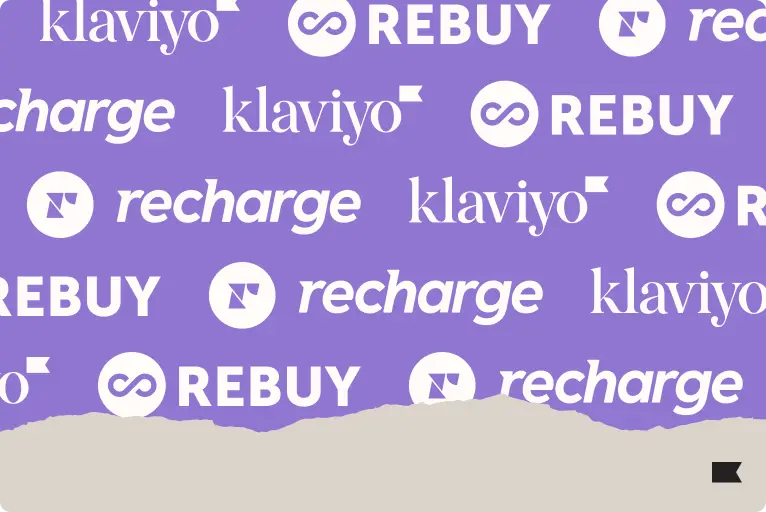How to scale your laid-back brand, according to Marine Layer

In 2016, Marine Layer had a complicated goal: grow revenue while staying true to a chill origin story.
That story is all about the founder and CEO’s long-time favorite t-shirt—an ancient number he’d loved for years.
His girlfriend threw it out.
So he set out to build a brand that made clothes just as soft and comfortable as the lost tee—“stuff everyone wants to wear on the weekend,” says Renee Halvorsen, CMO of Marine Layer. “Or every day.”
But scaling that concept posed branding challenges. Marine Layer primarily sold through 8 brick-and-mortar stores, and their new ecommerce business was growing fast. It had the potential to be a huge growth lever.
Klaviyo helped us scale and find more and more ways to get in touch with our buyers, without getting overly promotional and still leaning into that premium brand lens.
But in ecommerce, conventional wisdom holds that growth means more. More channels, more messages and posts, more frequent touches—a.k.a. aggressive, noisy marketing.
That’s not how Marine Layer aimed to show up. So they leaned on Klaviyo to grow differently.
“Klaviyo helped us scale and find more and more ways to get in touch with our buyers, without getting overly promotional and still leaning into that premium brand lens,” Halvorsen says.
The results:
- 10x in revenue in the past 7 years
- 5x growth in number of brick-and-mortar store in the past 7 years
- ~30% YoY revenue growth, year after year
Here are a few tips from Marine Layer’s playbook.
1. Boost relevance with cohort-based personalization
Marine Layer doesn’t want personalization so real-time and specific that customers feel surveilled.
Instead, they’ve used Klaviyo’s intuitive segmentation to implement what Halvorsen calls “cohortized personalization,” based on whether people signed up in store or online, or whether they more often shop women’s or men’s clothing.
“That has allowed us to up our email frequency and drive more revenue,” says Halvorsen—without sacrificing engagement, because they’ve ramped up relevance.
2. Power durable relationships with omnichannel data
Marine Layer manages email and SMS through Klaviyo, and uses Klaviyo integrations to pull in ecommerce data from Shopify and retail data from their POS system.
“It’s incredibly important for us to have retail data, SMS information, email data, and DTC information all in one place,” says Halvorsen. “It makes it easier for us to understand how frequently we contact our customers.”
It’s incredibly important for us to have retail data, SMS information, email data, and DTC information all in one place. It makes it easier for us to understand how frequently we contact our customers.
That helps them avoid sunsetting digital subscribers who have shifted to in-person shopping, and control their messaging cadence. For example: They send email campaigns at most once a day, 5 days a week.
This laid-back frequency fits their brand. “We want our customers to feel like they have some reprieve from the chaos of everyday life,” says Halvorsen.
3. Measure success in engagement as well as revenue
To ensure Marine Layer isn’t straying from their well-loved brand, Halvorsen doesn’t just review creative—she looks at engagement data tracked in Klaviyo’s digestible real-time dashboards.
Halvorsen doesn’t see it as a success to hit growth goals at the expense of engagement metrics and CLV—key, implicit ways customers give the brand feedback.
“Listening to our customers is super important,” Halvorsen says.
The impact: “peak engagement” and 10x the revenue
In the past 7 years, Marine Layer has consistently grown revenues around 30% YoY.
The brand now has more than 5x the number of stores it had when Halvorsen started—45+—and makes 10x its 2016 revenues.
Marine Layer is sending more emails than ever before, through automated flows and segmented campaigns. They haven’t seen any major engagement losses—and unsubscribes are actually decreasing.
What we’ve been really proud of with Klaviyo is that we have been able to increase our email contact frequency, but we’re still seeing peak engagement from our buyers.
“What we’ve been really proud of with Klaviyo is that we have been able to increase our email contact frequency,” Halvorsen says, “but we’re still seeing peak engagement from our buyers.”
In fact, marketing automation revenue has risen faster than total revenue, and powered overall growth—thanks in part to the performance and behavioral data Marine Layer has centralized in Klaviyo.
“We’ve been working with Klaviyo since 2016 and we really haven’t looked for other partners,” says Halvorsen.

Related content

Discover the best marketing automation platform for 2026 and learn how to choose based on data, integrations, scalability, and the features that drive real customer value.

Discover 4 proven ways to reduce cart abandonment and recover lost sales. Learn how to build trust, streamline check-out, and personalize abandoned cart flows to convert more shoppers.

Looking for the best Shopify apps for marketing and customer service? Klaviyo, Rebuy, and Recharge together create a high-performing tech stack that revenue and customer retention.